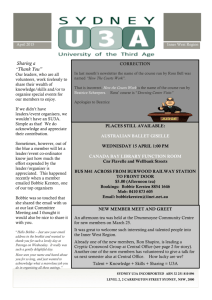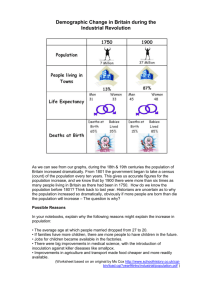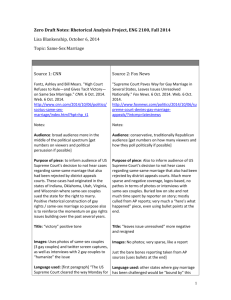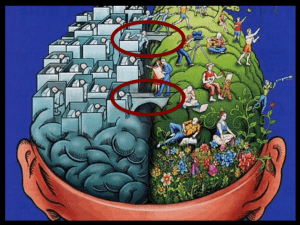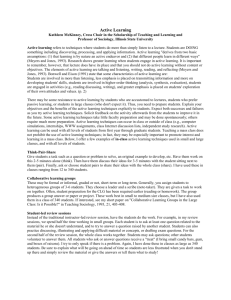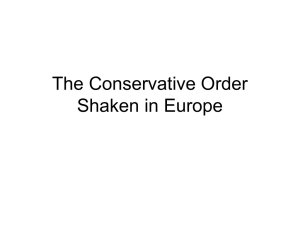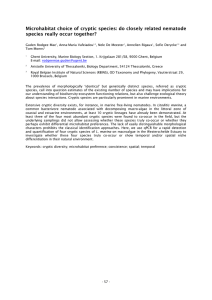Topic8
advertisement
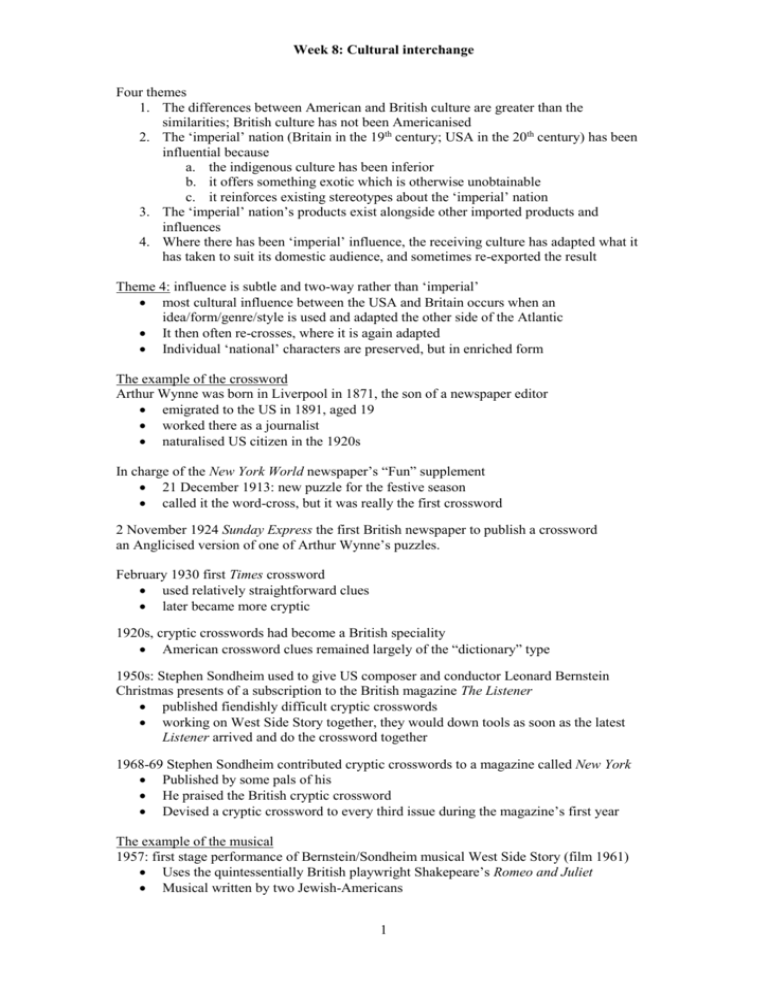
Week 8: Cultural interchange Four themes 1. The differences between American and British culture are greater than the similarities; British culture has not been Americanised 2. The ‘imperial’ nation (Britain in the 19th century; USA in the 20th century) has been influential because a. the indigenous culture has been inferior b. it offers something exotic which is otherwise unobtainable c. it reinforces existing stereotypes about the ‘imperial’ nation 3. The ‘imperial’ nation’s products exist alongside other imported products and influences 4. Where there has been ‘imperial’ influence, the receiving culture has adapted what it has taken to suit its domestic audience, and sometimes re-exported the result Theme 4: influence is subtle and two-way rather than ‘imperial’ most cultural influence between the USA and Britain occurs when an idea/form/genre/style is used and adapted the other side of the Atlantic It then often re-crosses, where it is again adapted Individual ‘national’ characters are preserved, but in enriched form The example of the crossword Arthur Wynne was born in Liverpool in 1871, the son of a newspaper editor emigrated to the US in 1891, aged 19 worked there as a journalist naturalised US citizen in the 1920s In charge of the New York World newspaper’s “Fun” supplement 21 December 1913: new puzzle for the festive season called it the word-cross, but it was really the first crossword 2 November 1924 Sunday Express the first British newspaper to publish a crossword an Anglicised version of one of Arthur Wynne’s puzzles. February 1930 first Times crossword used relatively straightforward clues later became more cryptic 1920s, cryptic crosswords had become a British speciality American crossword clues remained largely of the “dictionary” type 1950s: Stephen Sondheim used to give US composer and conductor Leonard Bernstein Christmas presents of a subscription to the British magazine The Listener published fiendishly difficult cryptic crosswords working on West Side Story together, they would down tools as soon as the latest Listener arrived and do the crossword together 1968-69 Stephen Sondheim contributed cryptic crosswords to a magazine called New York Published by some pals of his He praised the British cryptic crossword Devised a cryptic crossword to every third issue during the magazine’s first year The example of the musical 1957: first stage performance of Bernstein/Sondheim musical West Side Story (film 1961) Uses the quintessentially British playwright Shakepeare’s Romeo and Juliet Musical written by two Jewish-Americans 1 Week 8: Cultural interchange Protagonists are immigrants to USA ‘America’ both celebrates and criticises American culture The women are pro-American even though women faced more discrimination than men 1958 BBC TV first broadcasts The Black and White Minstrel Show (until 1978) Male singers ‘blacked up’ in imitation of stereotypical black minstrels Jim Crow segregation laws thought to be names after a black character from a minstrel show Hugely popular in the UK; popularity declined when the male singers dropped the black make-up 1964 TV show features minstrels singing Gilbert and Sullivan Contrast the energy and exuberance of West Side Story with the staid prissiness of the Black and White Minstrels Both are examples of concepts crossing the Atlantic and being adapted for national consumption Jazz becomes popular in Britain in the inter-war years British ‘trad’ jazz movement of late 1940s sometimes seen as a rejection of US cultural dominance ‘Skiffle’ of late 1950s a British variant on jazz 1950s Rock ‘n Roll a wholly US phenomenon British imitators anodyne: Tommy Steele, Cliff Richard Tony Drake’s talk on Bob Dylan, Beatles, Stones, Animals trans-Atlantic mutual influence and adaption BUT modern British pop music less successful in the USA BUT some areas remain national and are merely popular the other side of the Atlantic The US has produced few composers of opera Bernstein’s musicals more popular than his operatic output? US famous for its productions of the European operatic repertoire US has produced plenty of opera singers British musicals of the 1950s different from US grand spectacles whimsy of The Boy Friend (1954), Salad Days (1954), Oliver (1960) British NT does well-received productions of American musicals (e.g. Guys ‘n Dolls, 1982, Oklahoma, 1998) Lloyd Webber an example of American-style lavish productions? How far has the literature/poetry of each nation been influenced by the other? Theatre: parallel developments British ‘kitchen sink drama’ (mid-1950s on) largely indigenous Gritty working class themes and heroes: John Osborne, Arnold Wesker, John Arden influenced as much by European theatre (especially Brecht) as American American ‘realist’ drama also indigenous Eugene O’Neill, Long Day’s Journey into Night, 1956 Arthur Miller, late 1940s and 1950s Edward Albee. Who’s Afraid of Virginia Woolf, 1961 2 Week 8: Cultural interchange Themes 2 and 3 US 20th century cultural ‘exports’ Hollywood films o Drive out British competition because they are better funded and better o Provide a glimpse of an exotic world rather than influence lives o Hollywood echoes the Buffalo Bill spectacular of 1880-1910 o Buffalo Bill enormously popular in Britain because of its exotic nature Coca-Cola and McDonalds o No more pervasive of British culture than Indian and Chinese foods TV soap operas: Dallas, Dynasty in 1970s, Friends in 2000s o Reinforce British assumptions about the brash, money-obsessed nature of US culture o Some influence on teenage slang o ‘British’ soaps remain popular in UK British 20th century cultural ‘exports’ to the USA Costume drama: reinforces US assumptions about British class structure and perceptions of Britain as heritage theme park; monarchs, castles, antiques Fawlty Towers successful in the USA Some successful British sit-coms given US settings Is British culture any more important to Americans than that of other Europeans? Theme 1 The differences between American and British culture are greater than the similarities; British culture has not been Americanised Globalisation and Americanisation are not the same 19th century “[The USA] was still, for most purposes during the nineteenth century, a social and intellectual colony of Great Britain.” (Kathleen Burk, p. 310) How true is this? US abolitionist movement influenced by British Evangelical churches have close links 1870-1914: 60 British peers marry Americans Helps to create similar elites, though significant differences remain British reform movements influenced by USA: Bentham and Chartists Late 19th century/early 20th century reform movements parallel, not linked Progressives in USA Liberal reforms of early 20th century in Britain Women’s suffrage movement: influence of temperance movement stronger in USA British and American cultural differences wide a) Political culture US separation of powers and federal structure US election of officials Frequency of elections Absence of socialism in USA Weakness of US trade unions Strength of anti-communism: Red Scares of 1919 and McCarthy Attitudes to role of government and welfare 3 Week 8: Cultural interchange b) US racial mixture greater than in UK No Jim Crow apartheid in UK Race remain central to US politics today c) US religious culture more diverse No established church, so churches in the market-place for ‘customers’ Variety of protestant sects Strength of Catholicism d) Social reform movements of late 1960s and 1970s Women’s liberation and Gay rights begin in the USA Both provoke stronger reaction in USA than in GB US women’s movement 1964 Civil Rights Act predates British 1970 Equal Pay Act 1966 Betty Friedan forms NOW 1973 Roe versus Wade Supreme Court decision provokes Republican backlash 1972 Congress passed Equal Rights Amendment Treats women as identical to men Some feminists want women’s separate needs recognised (e.g. provision of rape counselling) 1972 Phyllis Schlafly established National Committee to Stop ERA o Campaigns against ERA as threat to home and family o 1982 ERA defeated: ratified by only 35 states Gay rights in the USA 1969 Police raid on Stonewall Inn, New York leads to formation of Gay Liberation Front 1978 murder of Harvey Milk, gay official in San Francisco 1981 AIDS virus identified 1993 Clinton announces ‘Don’t ask; don’t tell’ policy for servicemen 1996 Defence of Marriage Act (DOMA) defines marriage as between a man and a woman 2000 Vermont permits civil unions 2003 US Supreme Court rules in Lawrence v Texas that sodomy laws in the US are unconstitutional 2004 Same sex marriage legal in Massachusetts 2008 California voters approved a ban on same-sex marriage in Proposition 8; ban upheld by the state Supreme Court 2008 Connecticut allows same-sex marriage 2010 ‘Don’t ask; don’t tell’ policy ended 2013 US Supreme Court strikes down DOMA; same-sex marriage legal in 16 states Gay rights in the UK 2004 Civil partnerships introduced 2013 Same-sex marriage legalised e) Sporting culture different Baseball and American football not exported to Britain Cricket not exported to USA Soccer only recently successful in USA o Impact of 1994 World Cup and global status of game, not British influence 4

